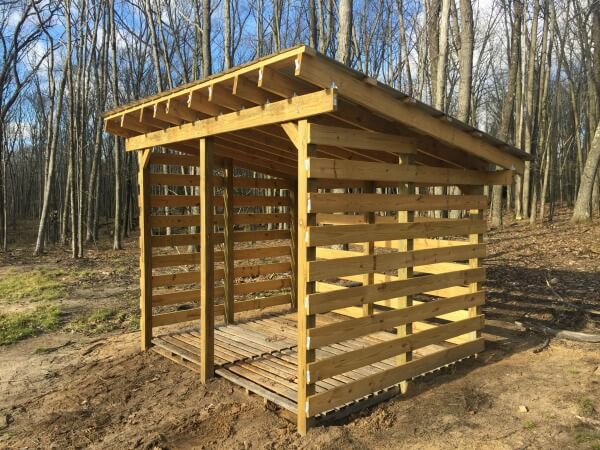
Alright, you're ready to build a firewood storage shed, eh? That's a great way to keep your wood dry and ready for those cozy winter evenings. But, you wanna make sure you're building it right so your wood doesn't rot, get moldy, or end up too damp to burn properly. That's where good ventilation comes in. Let's chat about building a firewood shed that breathes!
The Basics: Choosing Your Location
First things first, where's this shed gonna live? You want to pick a spot that's:
Well-drained: You don't want your wood sitting in a puddle, so make sure the ground slopes away from the shed.
Sunny: Sunlight helps dry out the wood, keeping it in good shape. Think of it like giving your wood a little bit of natural sunbathing.
Elevated: If you can, build the shed on a raised platform or foundation. This keeps it off the ground and reduces moisture buildup.
The Structure: Building a Breathable Shelter
Alright, time to get your hands dirty! Here's the breakdown of what you need to consider:
Framing: Use pressure-treated lumber for the foundation and any parts that will be in contact with the ground. This will help resist rot. For the walls and roof, standard framing lumber will work fine.
Siding: Choose a material that breathes! That means no solid sheathing like plywood or OSB. Instead, opt for something with gaps to allow air to flow through, like:
Shiplap: This classic siding style creates a tight, but breathable, exterior.
T&G (Tongue and Groove) boards: These overlap slightly, allowing airflow but still providing some protection from the elements.
Lumber with gaps: You can also use regular lumber and leave gaps between the boards for ventilation.
Roof: For the roof, you'll need a material that's weather-resistant and provides some ventilation. Some good options include:
Metal roofing: This is a popular choice for sheds, as it's durable, long-lasting, and allows for some air movement.
Shingles: Choose a shingle that's well-ventilated, like asphalt shingles with a proper underlayment.
Corrugated plastic roofing: This is a lightweight and relatively inexpensive option that's easy to install and offers good ventilation.
Vents: You'll need to incorporate vents on both the sides and the roof of your shed. This will create a natural airflow, helping to dry the wood and prevent mold growth. Here's how you can do it:
Soffit Vents: Install vents along the bottom edge of your roof overhang. This will pull air in from below the roof.
Gable Vents: Add vents to the gables of your roof (the triangular ends). These will vent air out.
Side Vents: You can install vents on the sides of your shed to allow for cross-ventilation.
Stacking and Storing Wood Wisely
Remember, even with a well-ventilated shed, the way you stack your wood matters. Here's how to do it right:
Keep it Off the Ground: Use pallets, cinder blocks, or other sturdy supports to lift your wood off the ground. This prevents moisture from wicking up from the ground.
Leave Gaps: Don't stack the wood too tightly! Leave gaps between the logs and between stacks to allow air to circulate freely.
Stack Straight: Stack your wood in a straight line, avoiding gaps or openings that could create areas where air can't circulate.
Consider a Stacking Method: There are different ways to stack wood, like a "crib" or a "lean-to" style. Experiment and find what works best for you.
Additional Tips for Ventilation Success
Use a Dehumidifier: If you live in a very humid climate, a small dehumidifier inside your shed can help control moisture levels.
Install a Fan: A small exhaust fan on the roof can help move air through the shed, especially in humid weather.
Keep it Clean: Remove any leaves, debris, or wood chips that accumulate in the shed. This will help improve airflow and prevent mold growth.
Building Your Firewood Haven
You've got your plans, you've chosen your materials, and you're ready to build! Remember, with a little careful planning and attention to detail, you can easily build a firewood storage shed that will keep your wood dry and ready to burn. So, grab your tools, get out there, and build yourself a cozy, well-ventilated wood haven! You'll be thanking yourself all winter long when you have a ready supply of dry, seasoned wood to fuel those crackling fires! And who knows, maybe you'll even start a bonfire in your backyard to celebrate your amazing shed building skills! Happy building!
No comments:
Post a Comment